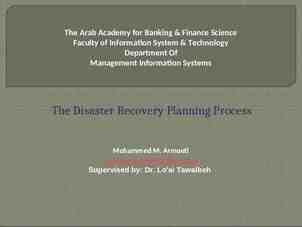MASTER OF SOCIAL WORK (MSW) STUDENTS’ ATTITUDES TOWARDS
26 Slides3.22 MB

MASTER OF SOCIAL WORK (MSW) STUDENTS’ ATTITUDES TOWARDS INCARCERATED INDIVIDUALS R O B E RT M . S E C U L A , A S W

ABOUT THE AUTHOR Professional Experience – Legal Assistant to Private Criminal Defense Law Firm Education – California State University, Fresno – Criminology: Forensic Behavioral Science, 2015 – Master’s of Social Work, 2018

WHY STUDY MSW STUDENTS ’ ATTITUDES How does this effect Human TOWARDS Services? PRISONERS? The imprisoned and formerly imprisoned along with their children become socially and economically disadvantaged – State/Social programs – Eligibility determination – Medical/Mental Health – Family System – Child Development

THE CHILDREN LIVES ARE INTERRUPT ED

THE RESEARCH

THE LITERATURE Important findings Race, Age, Gender, Political perspectives, Religion, Media, and Professional training Education, Experience, Socioeconomic class, and Location Predominantly Criminal justice articles

DECLINE IN SOCIAL WORK; RISE IN INCARCERATIO “Grandfather of NProbation” Creation of first juvenile courts Collateral system New era: Social/Political forces Decline in presence with a raise in imprisonment.

THE JUSTIFICATION FOR THE STUDY

MY QUESTIONS 1 2 3 What are graduate social work students’ attitudes towards incarcerated individuals? Do graduate social work students’ attitudes differ by their geographical location? What are some predictors of graduate social work students’ attitudes towards incarcerated

MSW STUDENTS ’ ATTITUDES TOWARDS INCARCERATED INDIVIDUALS Quantitative- the more the better! Reached out to 15 California State University (CSU) Master of Social Work (MSW) programs similar to CSU Fresno – CSU Fresno, CSU Dominguez Hills, CSU Long Beach, CSU Bakersfield, and CSU Monterey Bay, CSU San Bernardino Instruments – Attitude toward Prisoners (ATP) instrument (Melvin and Garner 1985) – Demographic questionnaire – Experience/Education

W H AT A R E G R A D U AT E SOCIAL WORK S T U D E N T S ’ AT T I T U D E S TOWARDS I N C A R C E R AT E D INDIVIDUALS?

SOCIAL WORK STUDENTS ’ ATTITUDES TOWARDS INCARCERATED INDIVIDUALS 6 CSU MSW PROGRAMS 105.62 26-to-144 Nursing 96 History students 95 Psychology students 90.5 Business students 85 Criminal Justice 82.2

D O G R A D U AT E S O C I A L WORK STUDENTS’ AT T I T U D E S D I F F E R BY THEIR GEOGRAPHICAL L O C AT I O N ?

Monterey bay 115 Dominguez Hills 110 Long Beach 106 CSU campuses and Mean attitudes towards Prisoners 120 Attitudes towards prisoners LOCATIO N 115 110 105 100 Bakersfield 105 San Bernardino 102 Fresno 99 95 90 CSU Fresno CSU Bakersfield CSU Dominguez CSU Monterey CSU Long Beach Hill Bay California State Universities CSU San Bernado

W H AT A R E S O M E P R E D I C T O R S O F G R A D U AT E S O C I A L W O R K S T U D E N T S ’ AT T I T U D E S T O WA R D S I N C A R C E R AT E D INDIVIDUALS?

SAMPLE COMPOSITION 245 total responses; N 202 177 females ( 87.6%) 24 males (11.9%) Ages 18-to-57 (M 25.25)

DEMOGRAPHIC QUESTIONNAIRE Significant Demographic Findings – Race – Socioeconomic status – Political affiliation – Education/Experience

Hispanic or Latino n 100(49.5%) ATP 104.76 Caucasian n 57 (28.2%) ATP 108.21 RACE African American n 20 (9.9%) ATP 112.50 Asian American n 14 (6.9%) ATP 101.86 Other n 10 (5%) ATP 92.36

Lower-class n 82 (40.6%) ATP 108.18 SOCIOECONOMIC Middle-class n 117 (57.9%) ATP 100.12 Upper-class n 3 (1.7%) ATP 94.33 SOCIOECONOMIC AT P

POLITICAL AFFILIATION Democrat (M 106.27, SD 17.328) Independent (M 103.62, SD 14.726) Republican (M 91.71, SD 21.861) Other (M 106.90, SD 14.622) Average (M 105.62, SD 16.820)

EDUCATION/EXPERIENCE “My MSW program has educated me about incarceration/incarcerated individuals.” “I have previously taken courses related to incarcerated individuals.” “I have been incarcerated in jail or prison.” “I have friends or family who have been incarcerated in jail or prison.” Education Experience ATP

WHAT'S MISSING? ATP DE M OG RA U PH NK IC N S, O 14. W 4 N, 86. 6 UNKNOWN DEMOGRAPHICS

CONCLUSION Studies on ex-prisoners, parolees, and re-entry have indicated that negative attitudes towards ex-prisoners are one of the primary determinants for recidivism Education and ATP: Obligatory need to educate Ensure a commitment to social justice, empowerment, quality, effective, efficient, and unbiased services Individual level- one life Macro level- policy Education among para professionals is a good way to ensure a safety net for the child and facilitate a successful re-entry for the incarcerated parent.

THANK YOU C C A S S C A N D PA R T N E R S !

REFERENCES Alexander, M. (2010). The war on drugs and the new Jim crow: Race, poverty, and the environment. Retrieved from http://urbanhabitat.org/files/ Alexander.20th.17-1.pdf Decety, J., Echols, S., & Correll, J. (2010). The blame game: The effect of responsibility and social stigma on empathy for pain. Journal of Cognitive Neuroscience, 22(5), 985-997. doi: 10.1162/jocn.2009.21266 Epperson, M.W., Roberts, L.E., Ivanoff, A., Tripodi, S.J., & Gilmer, C.N. (2013). To what extent is criminal justice content specifically addressed in MSW programs? Journal of Social Work Education, 49(1), 96107. Retrieved from http://diginole.lib.fsu.edu/islandora/object/fsu:205312/datastream/ PDF/view Federal Bureau of Justice Statistics. (2007). Prison inmates at midyear 2007. Retrieved from https://www.bjs.gov/content/pub/pdf/pim07.pdf Federal Bureau of Justice Statistics. (2014). Prisoners in 2014. Retrieved from https://www.bjs.gov/content/pub/pdf/p14.pdf Gumz, E. J. (2004). American social work, corrections and restorative justice: An appraisal. International Journal of Offender Therapy and Comparative Criminology, 48(4), 449-460. doi: 10.1177/0306624X03262516 Jewkes, Y. (2014). Punishment in black and white: Penal “hell-holes,” popular media, and mass incarceration. Atlantic Journal of Communication, 22(1), 42-60. doi: 10.1080/15456870.2014.860144 Kjelsberg, E., Skoglund, T. H., & Rustad, A. B. (2007). Attitudes towards prisoners, as reported by prison inmates, prison employees and college students. BMC Public Health, 7(1), 71. doi: 10.1186/1471-24587-71 Mandracchia, J. T., Shaw, L. B., & Morgan, R. D. (2013). What’s with the attitude? Changing attitudes about criminal justice issues. Criminal Justice and Behavior, 40(1), 95-113. doi: 10.1177/0093854812459474 Meiners, E. R. (2010). Right to be hostile: Schools, prisons, and the making of public enemies. New York, NY: Routledge. Melvin, K.B., Gramling L.K., & Gardner, W.M. (1985). A scale to measure attitudes toward prisoners. Criminal Justice and Behavior, 12(2), 241-253. doi: 10.1177/0093854885012002006 Park, S. (2009). College students' attitudes toward prisoners and prisoner reentry. (Doctoral dissertation, Indiana University, Pennsylvania). Retrieved from https://knowledge.library.iup.edu/cgi/viewcontent.cgi?referer https://www.google.com/&httpsredir 1&article 1717&context etd Schmitt, J., Warner, K., & Gupta, S. (2010). The high budgetary cost of incarceration. Washington, DC: Center for Economic and Policy Research. Tonry, M. (2009). Explanations of American punishment policies: A national history. Punishment & Society, 11(3), 377-394. doi: 10.1177/ 1462474509334609 Travis, J., Western, B., & Redburn, F. S. (2014). The growth of incarceration in the United States: Exploring causes and consequences. Retrieved from https://academicworks.cuny.edu/cgi/viewcontent.cgi?article 1026&context jj pubs Welch, K. (2007). Black criminal stereotypes and racial profiling. Journal of Contemporary Criminal Justice, 23(3), 276-288. doi: 10.1177/ 1043986207306870 Wilson, M. (2010). Criminal justice social work in the United States: Adapting to new challenges. Washington, DC: NASW Centre for Workforce Studies Yousman, B. (2009). Conclusion: Television, incarceration, imagination. Primetime prisons on US TV: Representation of incarceration. New York, NY: Peter Lang.

QUESTIONS?






